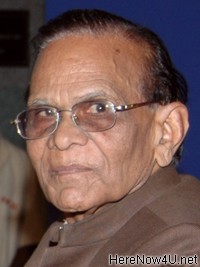It was intervention by the genius and towering personality like Rishabhdeo that reconciliation in two ferociously warring groups was worked out. Agroforestry was devised and extensive belts of trees were planted along with agriculture in such a manner and direction that the shade of tree belts did not affect the agricultural crops. The recent detailed research and study of Harappa and Sindhu culture have also proved the existence of practice of agroforestry by Harappans. Agro forestry was adopted during Second World War also for raising compensatory plantations free of cost. Forest land was given to landless people to plant tree species and grow agricultural crops also in the rows of trees till such time about 5-6 years trees start shading the crops. It was known as Taungya System and is taught in forest colleges.
Rishabhdeo was apostle of Ahimsa (Non-violence) and could not have advised cultivation of cereals and other crops which require tilling, sowing, weeding, watering repeatedly for every crop of 3 to 4 months duration. Agriculture practices entail lot of Hinsa (Violence) in tilling, sowing etc. Even Daulat Ram, the Jain poet of previous century only has also described not only practising but advising agriculture as sin in his famous treatise Chahdhala.
"देय न सो उपदेश, होय अघ बनज कृषि तै"
[Stanza II, Dhal IV]
[Do not advise agriculture, as it is sin]
"कर प्रमाद जल, भूमि, वृक्ष पावक न विराधे,
असि, धनु, हल हिंसोपकरण नहिं दे यश लाधे।"
[Stanza 12, Dhal VI]
[Do not damage water, soil, trees, and fire and do not give arms, bows and arrows, plough etc., which are instruments of violence]
Agriculture is generally interpreted as planting of short term crops but it is temporary agriculture. Planting of trees is also agriculture and is termed permanent agriculture or permaculture. Panicked by dwindling supply of food and other products from diminishing forests (Kalpavrikshas) people then must have sought advice of Rishabhdeo and he might have suggested agro forestry as both short and long term solution. People needed food and growing short term crops i.e. temporary agriculture was the only solution. Simultaneously planting of trees must have also been advised. Once the mixed polyculture forests yielding variety of food and other products started flowering and fruiting, temporary agriculture could be stopped. Prompted by the concept of Kalpavrikshas author prepared a project, "Human Nutrition from Forest Seeds" which was sanctioned by the Department of Science and Technology and Sneh Sharma has evaluated the nutritional status of forest seeds in her Ph.D. thesis. It was found that edible forest seeds are more nutritious than the cereals. Because of uncertainties in agriculture due to climatic and other natural vagaries, numerous superstitions flourished with it and then in other spheres.
 S.M. Jain
S.M. Jain
